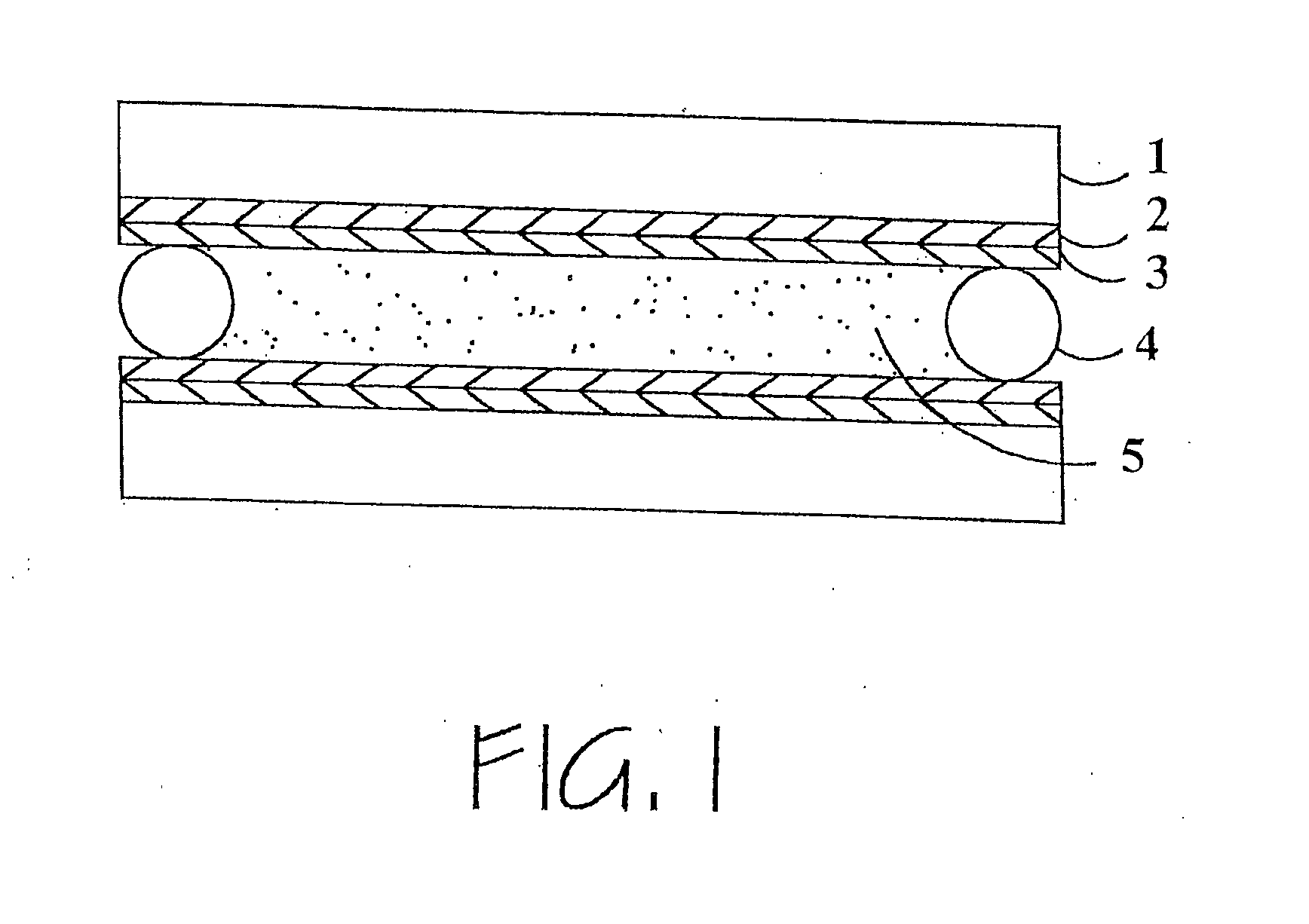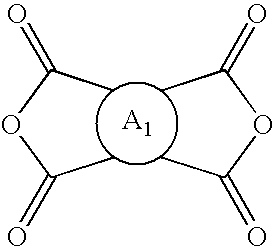Hybrid polymer materials for liquid crystal alignment layers
a liquid crystal alignment and hybrid technology, applied in the field of liquid crystal alignment materials, can solve the problems of reducing the electrical performance and optical stability of the device, affecting the long-term stability and performance of the device, and low assembly line throughpu
- Summary
- Abstract
- Description
- Claims
- Application Information
AI Technical Summary
Benefits of technology
Problems solved by technology
Method used
Image
Examples
example 1
[0098]The following example describes the synthesis of novel Addition Monomer 1 for use in the preparation of hybrid polymers of the invention.
3-[4-(6-Hydroxy-hexyloxy)-phenyl]-acrylic acid methyl ester
[0099]
Methyl 4-hydroxy cinnamate (40 g, 225 mmol) was dissolved in 1-methyl-2-pyrrolidinone (NMP, 300 mL). 6-Chlorohexanol (269 mmol, 36.8 g), anhydrous K2CO3 (37.2 g, 269 mmol) and catalytic amount of KI were added. The batch was stirred at 90° C. for 32 hours. Water was added to the cooled solution, which was subsequently extracted with ethyl acetate (EtOAc, 3×200 mL). The combined organics were washed with 10% KOH (2×100 mL), brine solution and then dried over MgSO4. The concentrated product was then recrystallized from a 1:1 mixture of EtOAc / hexanes to give 45 g (72% yield) of an off-white solid.
2-Methyl-acrylic acid 6-[4-(2-methoxycarbonyl-vinyl)-phenoxy]-hexyl ester, Addition Monomer 1
[0100]
To an ice-cooled solution of 3-[4-(6-hydroxy-hexyloxy)-phenyl]-acrylic acid methyl ester ...
example 2
[0101]The following example describes the synthesis of novel Addition Monomer 2 for use in the preparation of hybrid polymers of the invention.
2-Methyl-acrylic acid 6-[3-(4-methoxy-phenyl)-acryloyloxy]-hexyl ester, Addition Monomer 2
[0102]
[0103]A 1-L round-bottom (RB) flask was charged with K2CO3 (77.5 g, 0.561 mol), a stir-bar, catalytic amount of KI (0.93 g, 5.61 mmol) and N,N-dimethylformamide (DMF,500 mL), followed by the addition of 4-methoxycinnamic acid (100 g, 0.561 mol). The resulting suspension was stirred at ambient temperature while 6-chloro-1-hexanol (84.34 g, 0.617 mol) was added. The flask was then equipped with a H2O condenser and the reaction mixture was warmed at 90° C. under N2 for 36 h.
[0104]The mixture was then poured into H2O (1000 mL) and extracted with EtOAc (2×500 mL). The organic layer was washed with 5% KOH solution (300 mL), H2O (300 mL), brine (2×100 mL) and dried over MgSO4 (100 g). The solid was filtered off with a Büchner filter funnel and rinsed with...
example 3
[0105]The following example describes the synthesis of novel Addition Monomer 3 for use in the preparation of hybrid polymers of the invention.
2-Methyl-acrylic acid 6-[3-(3,4-dimethoxy-phenyl)-acryloyloxy]-hexyl ester, Addition Monomer 3
[0106]
[0107]A 1-L RB flask was charged with K2CO3 (18.243 g, 0.1321 mol), a stir-bar, catalytic amount of KI (0.60 g, 3.60 mmol) and DMF (300 mL), followed by the addition of 3,4-dimethoxycinnamic acid (25.0 g, 0.1201 mol). The resulting suspension was stirred at ambient temperature while 6-chloro-1-hexanol (18.03 g, 0.1321 mol) was added. The flask was then equipped with a H2O condenser and the reaction mixture was warmed at 90° C. under N2 for 24 h. The reaction mixture started as solid chunk and it slowly became a light yellow slurry.
[0108]The mixture was then poured into H2O (400 mL) and extracted with EtOAc (3×100 mL). The combined extracts were dried over Na2SO4 (30 g). The solid was filtered off with a Büchner filter funnel and rinsed with add...
PUM
| Property | Measurement | Unit |
|---|---|---|
| mol % | aaaaa | aaaaa |
| mol % | aaaaa | aaaaa |
| wt % | aaaaa | aaaaa |
Abstract
Description
Claims
Application Information
 Login to View More
Login to View More - R&D
- Intellectual Property
- Life Sciences
- Materials
- Tech Scout
- Unparalleled Data Quality
- Higher Quality Content
- 60% Fewer Hallucinations
Browse by: Latest US Patents, China's latest patents, Technical Efficacy Thesaurus, Application Domain, Technology Topic, Popular Technical Reports.
© 2025 PatSnap. All rights reserved.Legal|Privacy policy|Modern Slavery Act Transparency Statement|Sitemap|About US| Contact US: help@patsnap.com



